This pasta with ricotta is a creamy, comforting Italian dish made with ricotta cheese, tomatoes, garlic, and olive oil. It’s quick, flavorful, and perfect for an easy weeknight dinner.
If you like this pasta recipe then you'll like my Creamy Tomato Pasta or my Salmon Feta Pasta.

This article contains affiliate links which supports us at no extra cost to you.
Jump to:
Hi! I'm really excited to share with you this dish that is from my childhood. When I think of pasta with ricotta, my mind immediately goes back to summers in Sicily, where my family would gather around long wooden tables covered in bowls of freshly made pasta.
My nonna would stir creamy ricotta into a simple tomato sauce, using cheese from a local farm and tomatoes still warm from the sun. The air always smelled like basil, sea salt, and garlic—those comforting scents that define true Sicilian cooking. Every bite of that ricotta pasta felt like home, rich yet light, and made with nothing more than what was in season.
Even now, I still make this creamy ricotta pasta recipe when I want to bring a bit of Sicily into my kitchen. It’s the kind of meal that proves how simple ingredients—ricotta, olive oil, and ripe tomatoes—can create something special.
Whether you use rigatoni, penne, or farfalle, the sauce clings to every curve, coating it in a smooth, velvety layer of cheese. It’s an easy Italian pasta dish that tastes straight from a Sicilian trattoria, ready in under 30 minutes but full of the same warmth and love as my nonna’s table.
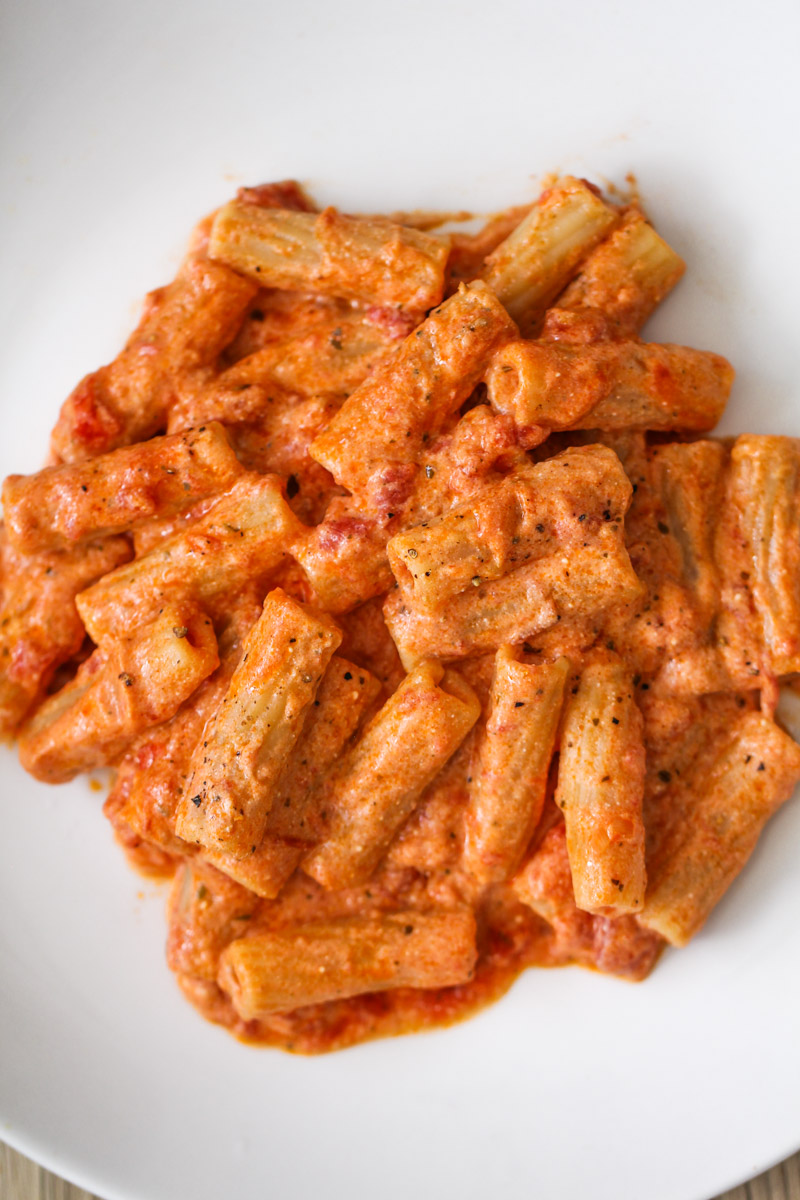
Ingredients
(Full printable recipe below)
- Pasta: I used rigatoni, but you can use farfalle, penne, or fusilli—any short pasta that holds sauce well.
- Canned tomatoes or passata: Brings rich, tangy flavor and a silky base for the ricotta sauce.
- Garlic: Adds aromatic depth and warmth to the sauce.
- Extra virgin olive oil: Enhances flavor and helps the garlic infuse beautifully.
- Ricotta cheese: Creamy and mild, it creates the luscious texture that defines this dish.
- Sea salt: Balances the flavors and brings out the natural sweetness of the tomatoes.
- Freshly ground black pepper: Adds gentle heat and depth to the creamy sauce.
- Grated Parmigiano Reggiano: Finishes the pasta with a salty, nutty richness.
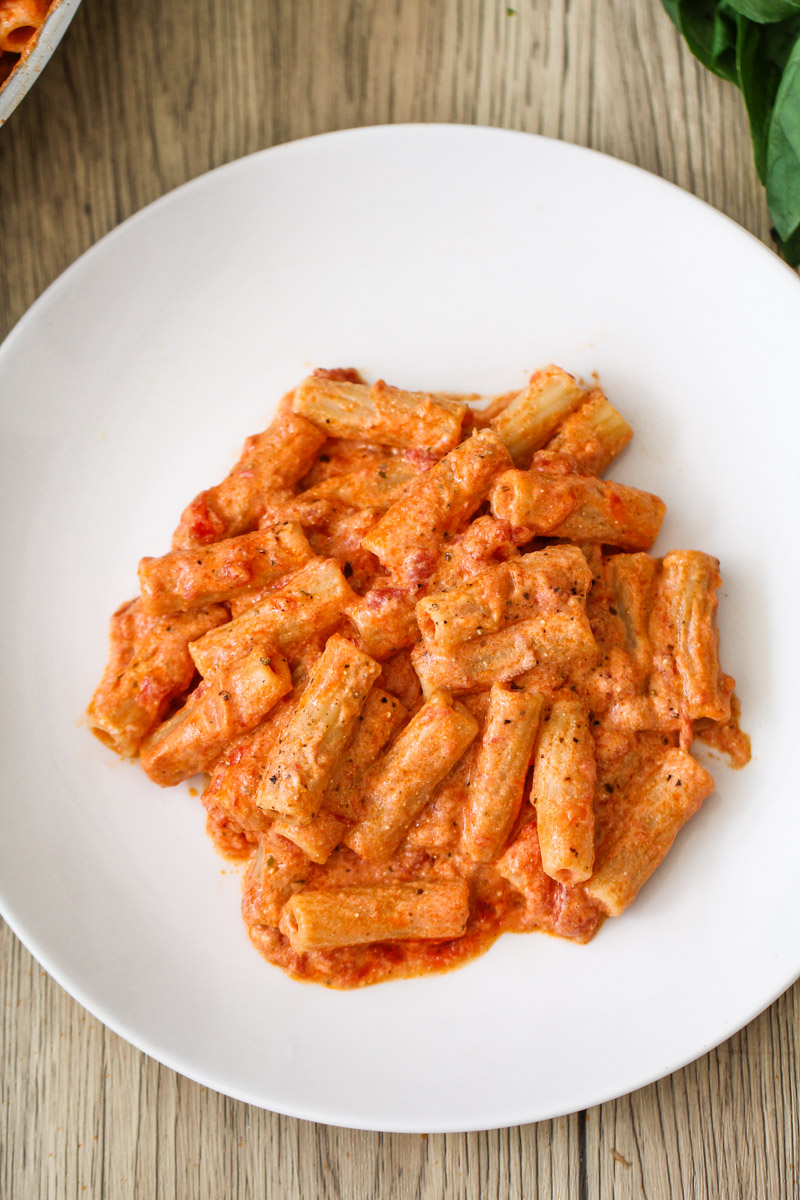
How to make pasta with ricotta
Gather your ingredients. There aren't that many, and having them nearby makes the process smoother.
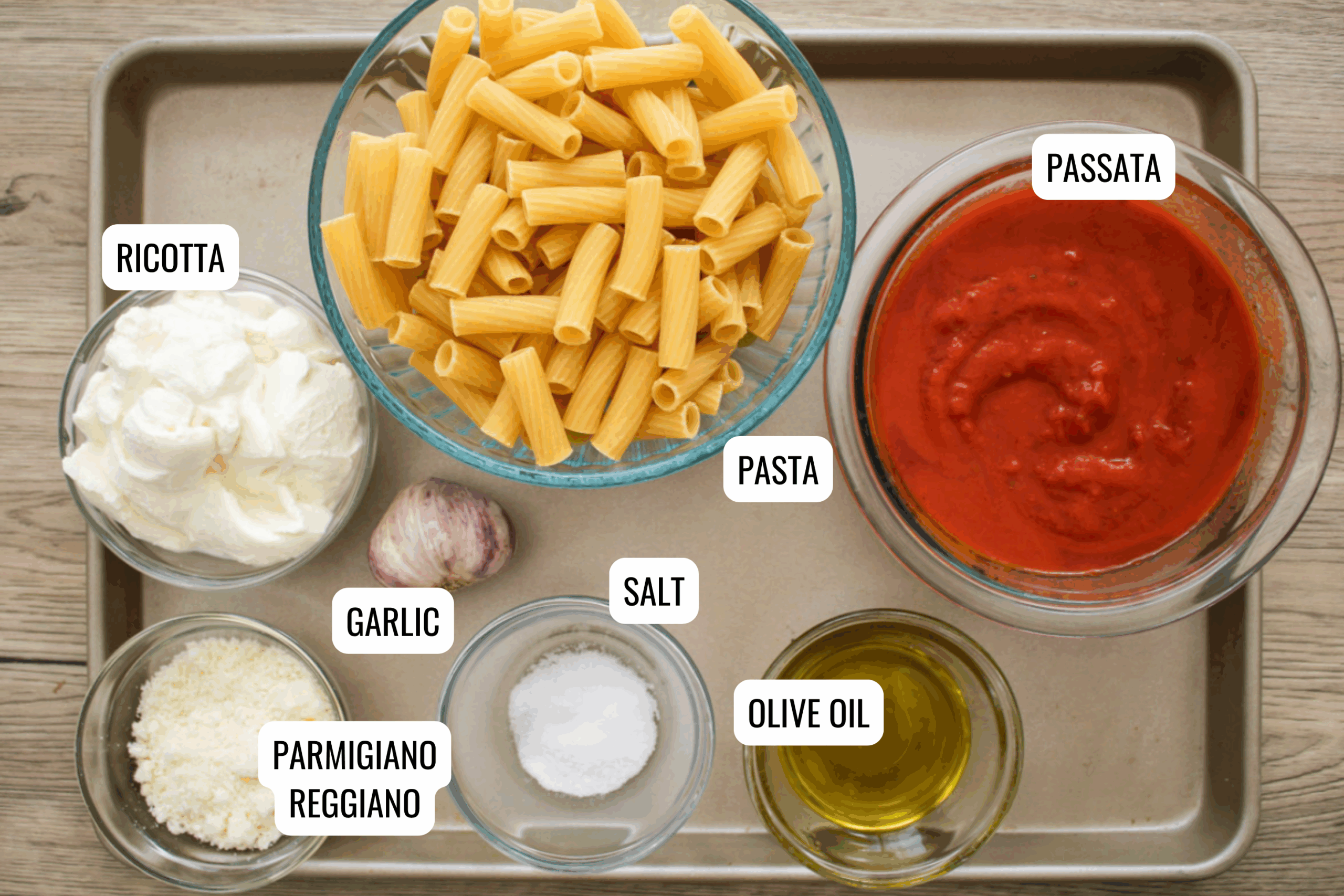
While you begin this quick sauce, you could begin cooking the pasta.
- Boil the pasta: Bring a large pot of salted water to a boil. Add the pasta and cook until al dente according to the package directions. Reserve about ½ cup of the pasta water, then drain.
- Step 1-2: Prepare the sauce: While the pasta cooks, warm a drizzle of extra virgin olive oil in a large skillet over medium heat. Add the garlic and sauté until fragrant, about 30 seconds to 1 minute—don’t let it brown.
- Step 3: Add the tomatoes: Pour in the canned tomatoes or passata and season with a pinch of sea salt and freshly ground black pepper. Let the sauce simmer gently for 8–10 minutes, stirring occasionally, until slightly thickened.
- Step 4: Starchy pasta water: Carefully scoop out about 1 cup of the starchy pasta water.
- Step 5: Simmer sauce: Let the sauce simmer gently for 8–10 minutes, stirring occasionally, until slightly thickened.
- Step 6: Add pasta: Drain the pasta and add directly to the skillet with the sauce.
- Step 7-8: Add ricotta: Lower the heat and add the ricotta cheese directly to the sauce. Stir until creamy and smooth, adding a splash of reserved pasta water if the sauce seems too thick. Let everything cook together for about a minute so the flavors meld beautifully.
- Step 9: Add cheese: Sprinkle generously with grated Parmigiano Reggiano.
- Step 10: Serve: Before serving, add more grated cheese, if you like, and a drizzle of olive oil, a touch more black pepper. Serve warm and enjoy immediately.
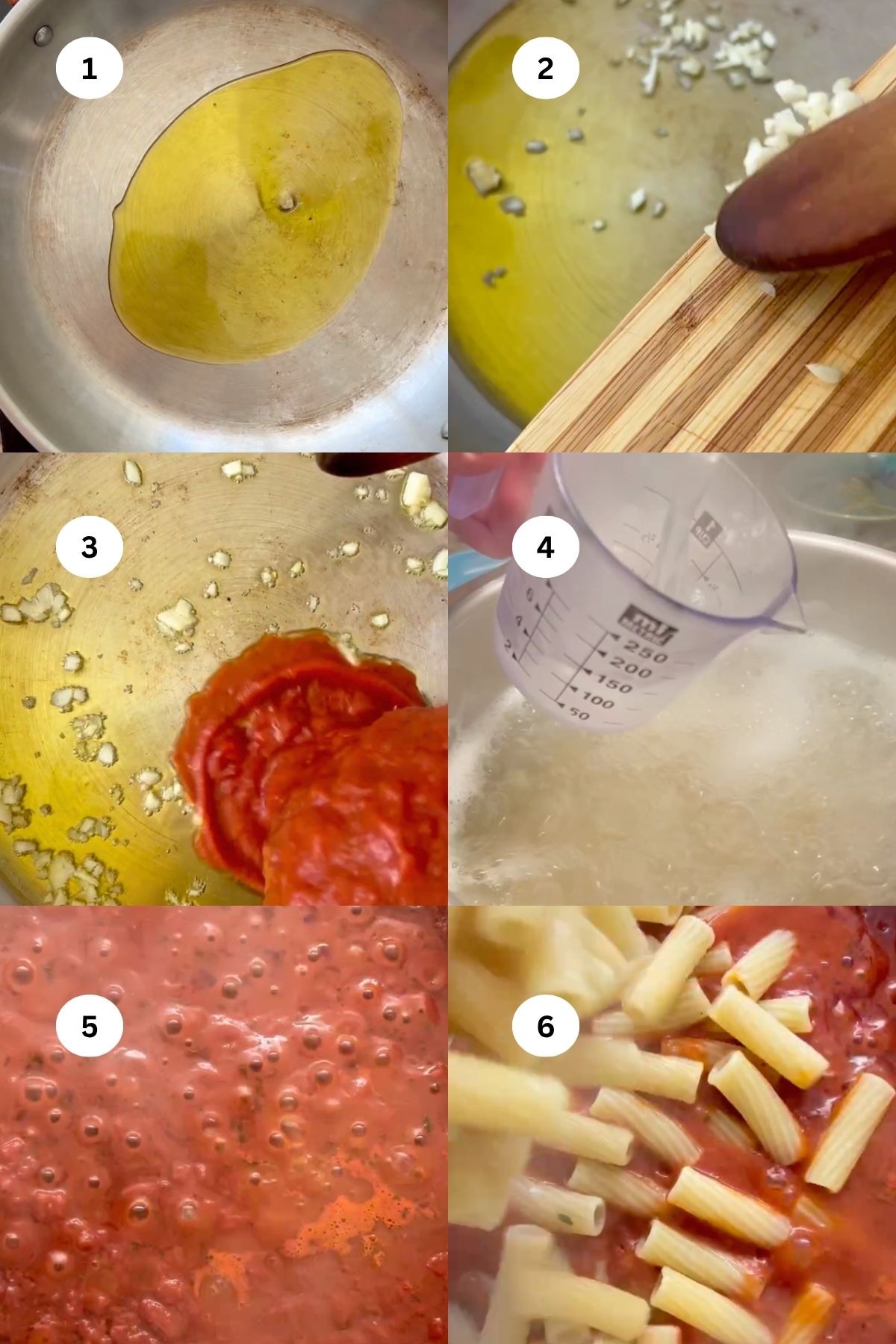

📃 NOTE: Recipe card with detailed instructions are below! Print it out for later!
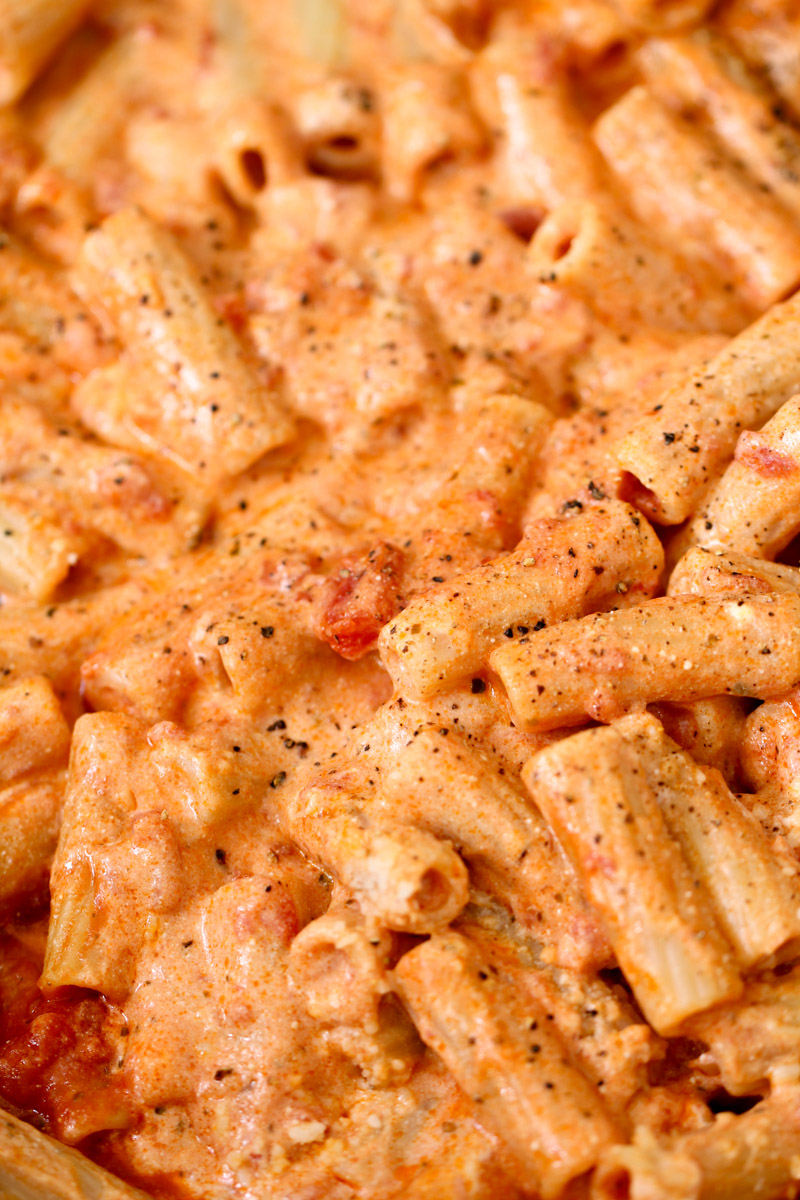
Our Recipe Tips
- Use high-quality ricotta — fresh ricotta gives the sauce a creamy, slightly sweet base that balances the acidity of the tomatoes.
- Drain excess liquid from the ricotta with a fine sieve or cheesecloth to avoid a watery sauce. I like the Galbani brand (not sponsored). It has a really nice texture, and is not watery...no need to strain it.
- Sauté garlic in olive oil before adding tomatoes to deepen the flavor.
- Choose San Marzano or high-quality canned tomatoes for a naturally sweet, rich sauce.
- Let the tomato sauce simmer for 15–20 minutes to thicken and develop flavor before adding ricotta.
- Stir the ricotta in off the heat to keep it creamy and prevent curdling.
- Add a splash of pasta cooking water to loosen the sauce and help it cling to the pasta.
- Season well with salt, pepper, and fresh basil for balance.
- Finish with a drizzle of extra virgin olive oil for richness.
- Top with freshly grated Parmigiano-Reggiano before serving for extra depth.
- Use short pasta shapes like rigatoni, penne, or fusilli that hold onto the creamy sauce.
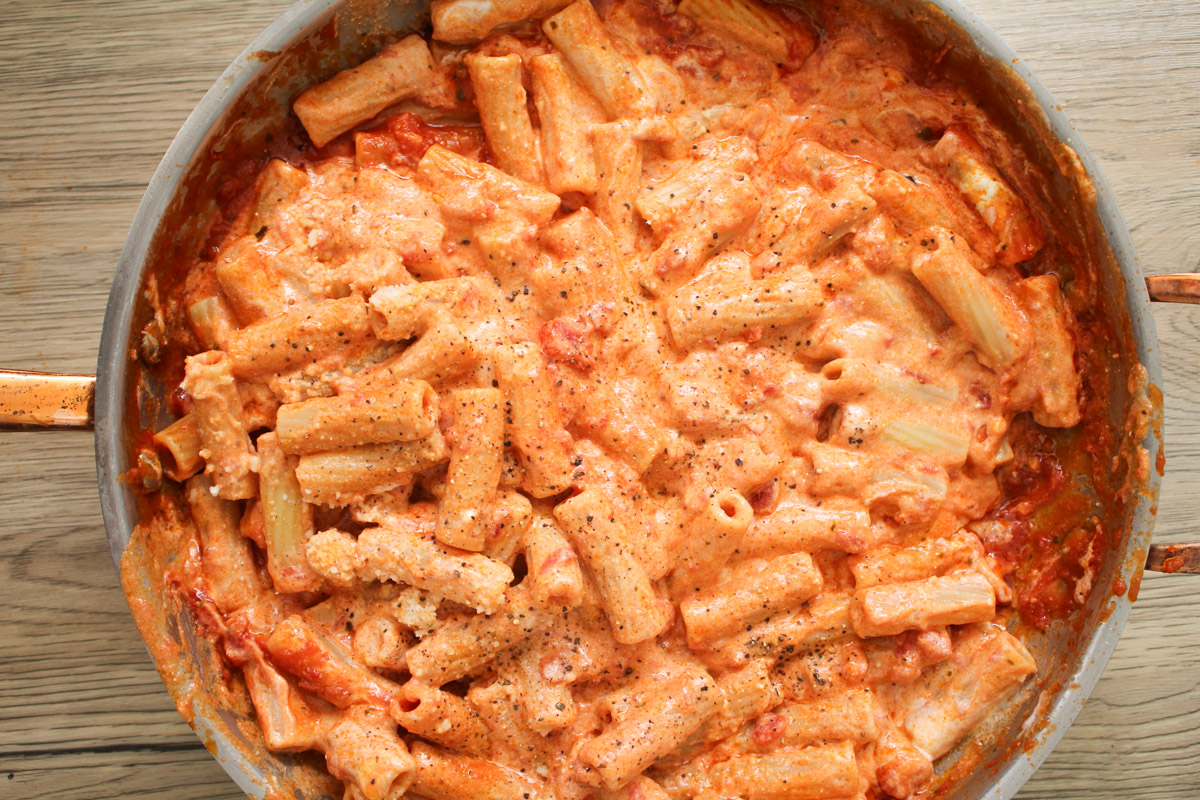
Storing & Freezing
- To Store: Keep leftovers in an airtight container in the fridge for up to 3 days.
- To Freeze: Freeze the sauce on its own before adding the ricotta (without pasta) for up to 2 months. Thaw overnight in the refrigerator and reheat gently on the stovetop before serving. Add ricotta when the sauce is heated and stir to combine with the pasta.

FAQ'S
Use fresh whole milk ricotta for the best flavor and creamy texture. Avoid pre-whipped or low-fat versions—they can make the sauce grainy or watery.
Yes, but choose one with simple ingredients (tomatoes, olive oil, garlic, and salt). If using jarred sauce, warm it up and mix in the ricotta right before serving to keep it smooth.
Add the ricotta off the heat and stir gently. Sudden high heat can make it separate or clump.
Short, ridged shapes like rigatoni, penne, or conchiglie (shells) hold the sauce beautifully. Long pasta like spaghetti can work too, but the sauce clings better to short cuts.
Yes, you can make the tomato base in advance. When ready to serve, reheat it gently and stir in the ricotta just before tossing with the pasta.
Yes—if your ricotta and Parmigiano-Reggiano are made without animal rennet. Always check the labels to confirm.
Absolutely. Try adding crumbled Italian sausage, pancetta, or shredded rotisserie chicken for a heartier version.
Store in an airtight container for up to 3 days in the fridge. Reheat gently with a splash of milk or pasta water to bring back the creamy texture.
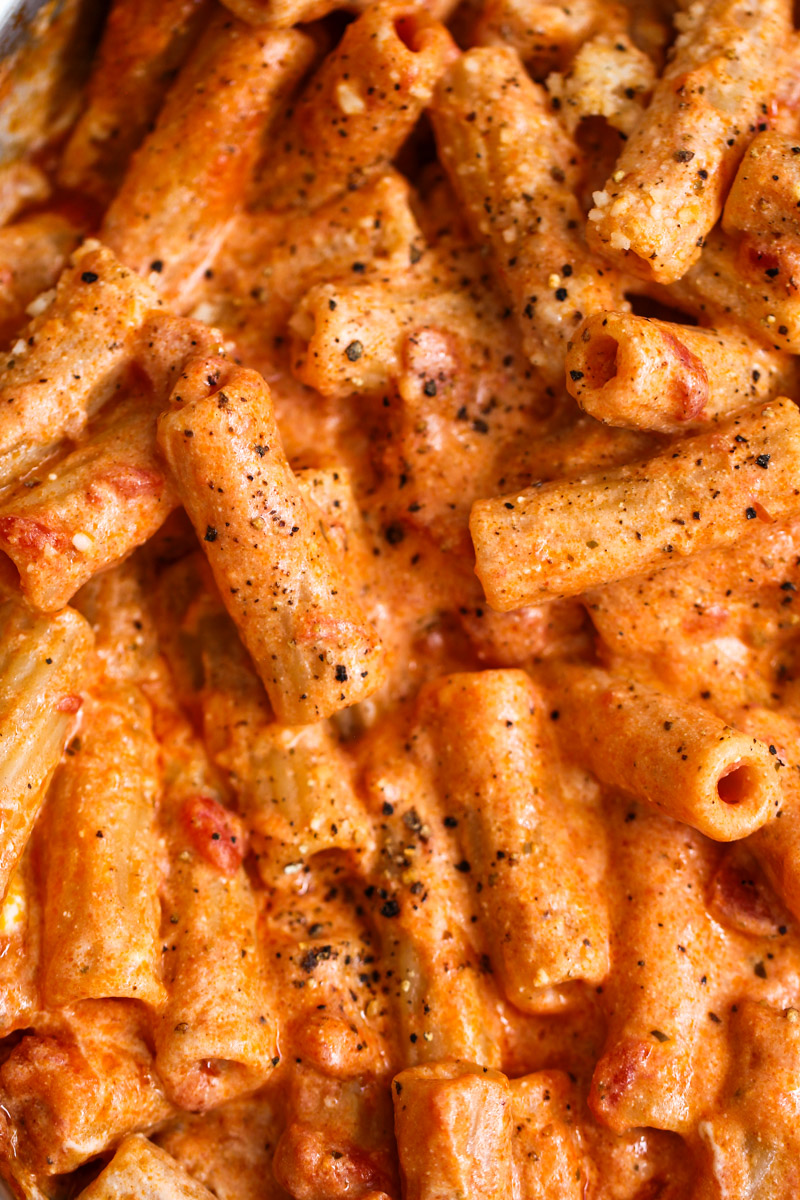
What to serve with this recipe
Serve pasta with tomato ricotta sauce with:
- A side of my Authentic Focaccia Bread
- A really easy salad like Insalata Mista
- For dessert, a delicious slice of my Italian Apple Cake
Some other recipes you'll love:
- Creamy Pumpkin Pasta
- Rigatoni alla Vodka
- Roasted Butternut Squash and Pumpkin Lasagna
- Butternut Squash Pasta
- Pasta Puttanesca
Did you make this and love it? Please RATE THE RECIPE below:)
I would LOVE if you can leave me a star rating and a review down below and let me know your thoughts! It means the world to me to hear how you like it.
Please Subscribe and give a follow on Instagram, Facebook, Pinterest, and TikTok xx
📖 Recipe
📖 Recipe
BEST Tomato Ricotta Pasta Recipe
Equipment
- 1 Knife
- 1 Large Skillet
Ingredients
- 1 lb Pasta I used rigatoni but you can use farfalle penne, or fusilli
- 1 28 ounce canned tomatoes or passata
- 1 clove garlic peeled and diced (you could also slightly crush
- 2 Tablespoons extra virgin olive oil
- 1 cup ricotta cheese
- ½ teaspoon sea salt plus more to taste
- ½ teaspoon freshly ground black pepper plus more to taste
- ¼ grated Parmigiano Reggiano plus more to taste
Instructions
Boil the pasta
- Bring a large pot of salted water to a boil. Add the pasta and cook until al dente according to the package directions. Reserve about ½ cup of the pasta water, then drain.
Prepare the sauce
- While the pasta cooks, warm a drizzle of extra virgin olive oil in a large skillet over medium heat. Add the garlic and sauté until fragrant, about 30 seconds to 1 minute—don’t let it brown.
Add the tomatoes
- Pour in the canned tomatoes or passata and season with a pinch of sea salt and freshly ground black pepper. Let the sauce simmer gently for 8–10 minutes, stirring occasionally, until slightly thickened.
Stir in the ricotta
- Lower the heat and add the ricotta cheese directly to the sauce. Stir until creamy and smooth, adding a splash of reserved pasta water if the sauce seems too thick.
Combine
- Toss the cooked pasta into the skillet, coating it well with the ricotta sauce. Let everything cook together for about a minute so the flavors meld beautifully.
Finish and serve
- Sprinkle generously with grated Parmigiano Reggiano, a drizzle of olive oil, and a touch more black pepper before serving. Serve warm and enjoy immediately.
Nutrition Disclaimer
Please keep in mind that the nutritional information presented below is an approximation and may vary depending on the exact ingredients used.
Notes
- Pasta: Short pasta like rigatoni, penne, or fusilli works best to hold the creamy ricotta sauce.
- Ricotta: Use fresh, whole-milk ricotta for the best texture and flavor. Drain excess liquid if it’s too watery. I really like the Galbani brand (not sponsored, just my opinion).
- Tomatoes: Both canned tomatoes and passata work well—choose high-quality Italian brands for the most authentic taste. For this sauce, I do prefer to use passata, so it's more smooth and velvet like in texture.
- Garlic: Lightly sauté the garlic just until fragrant; overcooking can make it bitter.
- Pasta water: Add a splash of reserved pasta water to loosen the sauce and help it coat the pasta perfectly.
- Parmigiano Reggiano: Grate it fresh right before serving for a nutty, savory finish.
- Seasoning: Always taste before serving and adjust salt and pepper to your liking.
- Serving: This pasta is best enjoyed immediately while the sauce is warm and creamy.


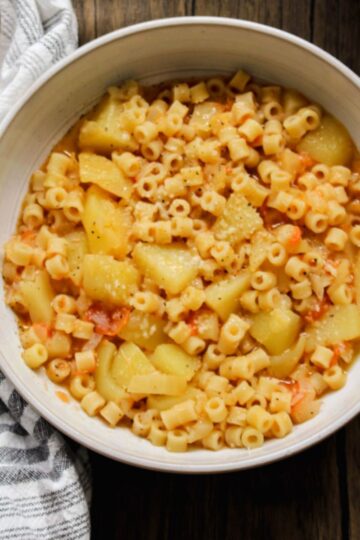
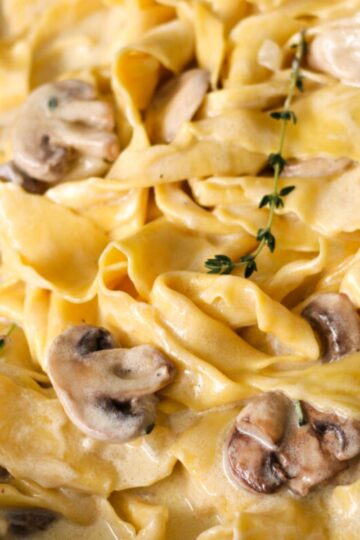


Comments
No Comments